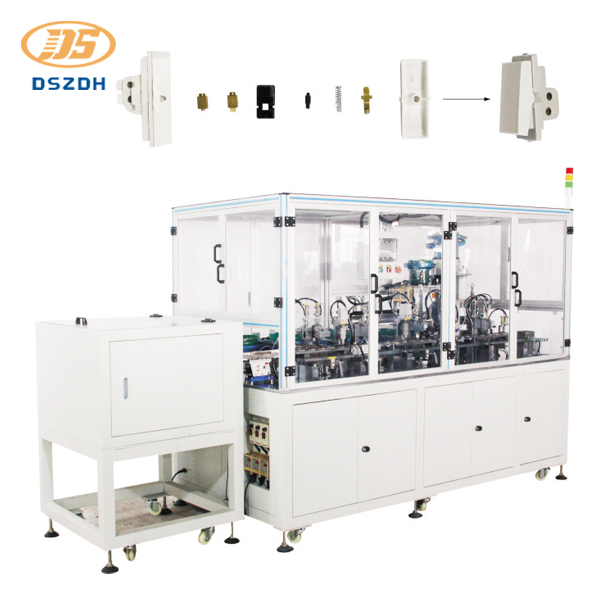- English
- 한국어
- Português
- русский
- Français
- 日本語
- Deutsch
- tiếng Việt
- Italiano
- Nederlands
- ภาษาไทย
- Polski
- Svenska
- magyar
- Malay
- বাংলা ভাষার
- Dansk
- Suomi
- हिन्दी
- Pilipino
- Türkçe
- Gaeilge
- العربية
- Indonesia
- Norsk
- تمل
- český
- ελληνικά
- український
- Javanese
- فارسی
- தமிழ்
- తెలుగు
- नेपाली
- Burmese
- български
- ລາວ
- Latine
- Қазақша
- Euskal
- Azərbaycan
- Slovenský jazyk
- Македонски
- Lietuvos
- Eesti Keel
- Română
- Slovenski
- मराठी
- Srpski језик
- Español
What are automated assembly machines?
2023-11-23
Automated assembly machines are industrial systems designed to automatically and efficiently assemble products or components without direct human intervention. These machines use a combination of technologies, such as robotics, sensors, actuators, and control systems, to perform various assembly tasks with high precision and speed. The primary goal of automated assembly machines is to streamline the manufacturing process, improve efficiency, reduce labor costs, and enhance overall product quality. Here are key features and components commonly associated with automated assembly machines:
Robotics: Automated assembly machines often incorporate robotic arms equipped with specialized end-of-arm tools. These robots can handle, manipulate, and position components with a high degree of accuracy.
Conveyor Systems: Conveyors are used to transport components or products between different stations within the assembly machine. They ensure a continuous flow of materials, allowing each assembly step to be performed sequentially.
Sensors and Vision Systems: Various sensors, including proximity sensors, photoelectric sensors, and vision systems, are integrated into automated assembly machines. These sensors help in detecting the presence of components, verifying product quality, and guiding robots in performing precise movements.
Actuators: Actuators are devices responsible for moving and controlling different machine parts. Pneumatic and electric actuators are commonly used to drive the movement of robotic arms, grippers, and other components.
Programmable Logic Controllers (PLCs): PLCs serve as the control center for automated assembly machines. They execute pre-programmed instructions to coordinate the operation of various components, ensuring precise timing and sequencing.
End-of-Arm Tools: These are specialized attachments or tools mounted at the end of robotic arms to perform specific assembly tasks, such as gripping, fastening, welding, or inspecting.
Human-Machine Interface (HMI): An HMI provides an interface for operators or engineers to monitor and control the automated assembly process. It may include a touchscreen display or other user-friendly controls.
Modularity: Automated assembly machines are often designed with a modular approach, allowing manufacturers to reconfigure or adapt the system for different products or assembly processes.
Quality Control Systems: Vision systems and other inspection technologies are integrated to ensure product quality. These systems can detect defects, verify correct assembly, and reject faulty products.
Automated assembly machines find applications in various industries, including automotive, electronics, pharmaceuticals, and consumer goods manufacturing. They are especially beneficial for high-volume production where efficiency, consistency, and precision are critical.






